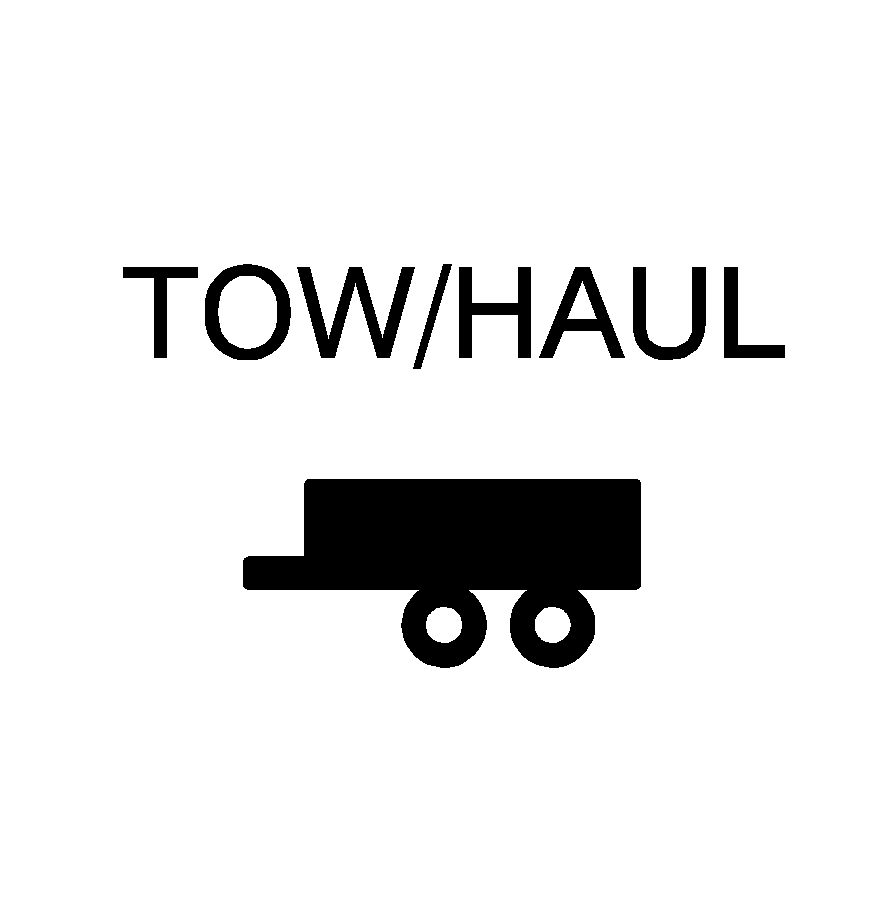Your vehicle is equipped with an automatic transmission and features an electronic shift position indicator located within the instrument panel cluster.
There are several different positions for your shift lever.
PARK (P): This position locks your drive wheels. It's the best position to use when you start your engine because your vehicle can't move easily.Caution: It is dangerous to get out of the vehicle if the shift lever is not fully in P (Park) with the parking brake firmly set. The vehicle can roll.
Do not leave the vehicle when the engine is running unless you have to. If you have left the engine running, the vehicle can move suddenly. You or others could be injured. To be sure the vehicle will not move, even when you are on fairly level ground, always set the parking brake and move the shift lever to P (Park). See Shifting Into Park . If you are pulling a trailer, see Towing a Trailer .Caution: Your vehicle will be free to roll -- even if your shift lever is in PARK (P) -- if your transfer case is in NEUTRAL. So, be sure the transfer case is in a drive gear -- not in NEUTRAL. See Shifting Into Park .
REVERSE (R): Use this gear to back up.Notice: Shifting to R (Reverse) while the vehicle is moving forward could damage the transmission. The repairs would not be covered by the vehicle warranty. Shift to R (Reverse) only after the vehicle is stopped.
To rock your vehicle back and forth to get out of snow, ice or sand without damaging your transmission, see If Your Vehicle is Stuck in Sand, Mud, Ice, or Snow .
NEUTRAL (N): In this position, your engine doesn't connect with the drive wheels. To restart when you're already moving, use NEUTRAL (N) only.Caution: Shifting into a drive gear while the engine is running at high speed is dangerous. Unless your foot is firmly on the brake pedal, the vehicle could move very rapidly. You could lose control and hit people or objects. Do not shift into a drive gear while the engine is running at high speed.
Notice: Shifting out of P (Park) or N (Neutral) with the engine running at high speed may damage the transmission. The repairs would not be covered by the vehicle warranty. Be sure the engine is not running at high speed when shifting the vehicle.
DRIVE (D): This position is for normal driving. If you need more power for passing, and you're:| • | Going less than about 35 mph (55 km/h), push your accelerator pedal about halfway down. |
| • | Going about 35 mph (55 km/h) or more, push the accelerator all the way down. |
You'll shift down to the next gear and have more power.
DRIVE (D) can be used when towing a trailer, carrying a heavy load, driving on steep hills or for off-road driving. You may want to shift the transmission to THIRD (3) or, if necessary, a lower gear selection if the transmission shifts too often.
THIRD (3): This position is also used for normal driving, however it offers more power and lower fuel economy than DRIVE (D).SECOND (2): This position gives you more power but lower fuel economy. You can use SECOND (2) on hills. It can help control your speed as you go down steep mountain roads, but then you would also want to use your brakes off and on. If you manually select SECOND (2), the transmission will drive in second gear. You may use this feature for reducing the speed of the rear wheels when you are trying to start your vehicle from a stop on slippery road surfaces. Once the vehicle is moving, shift into DRIVE (D).
FIRST (1): This position gives you even more power, but lower fuel economy than SECOND (2). You can use it on very steep hills, or in deep snow or mud. If the shift lever is put in FIRST (1) while the vehicle is moving forward, the transmission won't shift into first gear until the vehicle is going slowly enough.
Notice: Spinning the tires or holding the vehicle in one place on a hill using only the accelerator pedal may damage the transmission. The repair will not be covered by the vehicle warranty. If you are stuck, do not spin the tires. When stopping on a hill, use the brakes to hold the vehicle in place.
On cold days, approximately 32°F (0°C) or colder, your transmission is designed to shift differently until the engine reaches normal operating temperature. This is intended to improve heater performance.
Tow/Haul Mode

Your vehicle is equipped with a tow/haul mode. The button is located on the instrument panel to the right of the steering wheel.
You can use this feature to assist when towing or hauling a heavy load. See "Tow/Haul Mode" under Towing a Trailer for more information.
